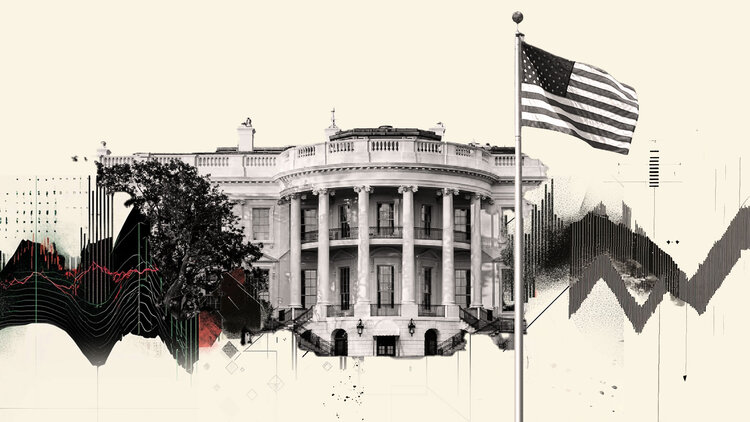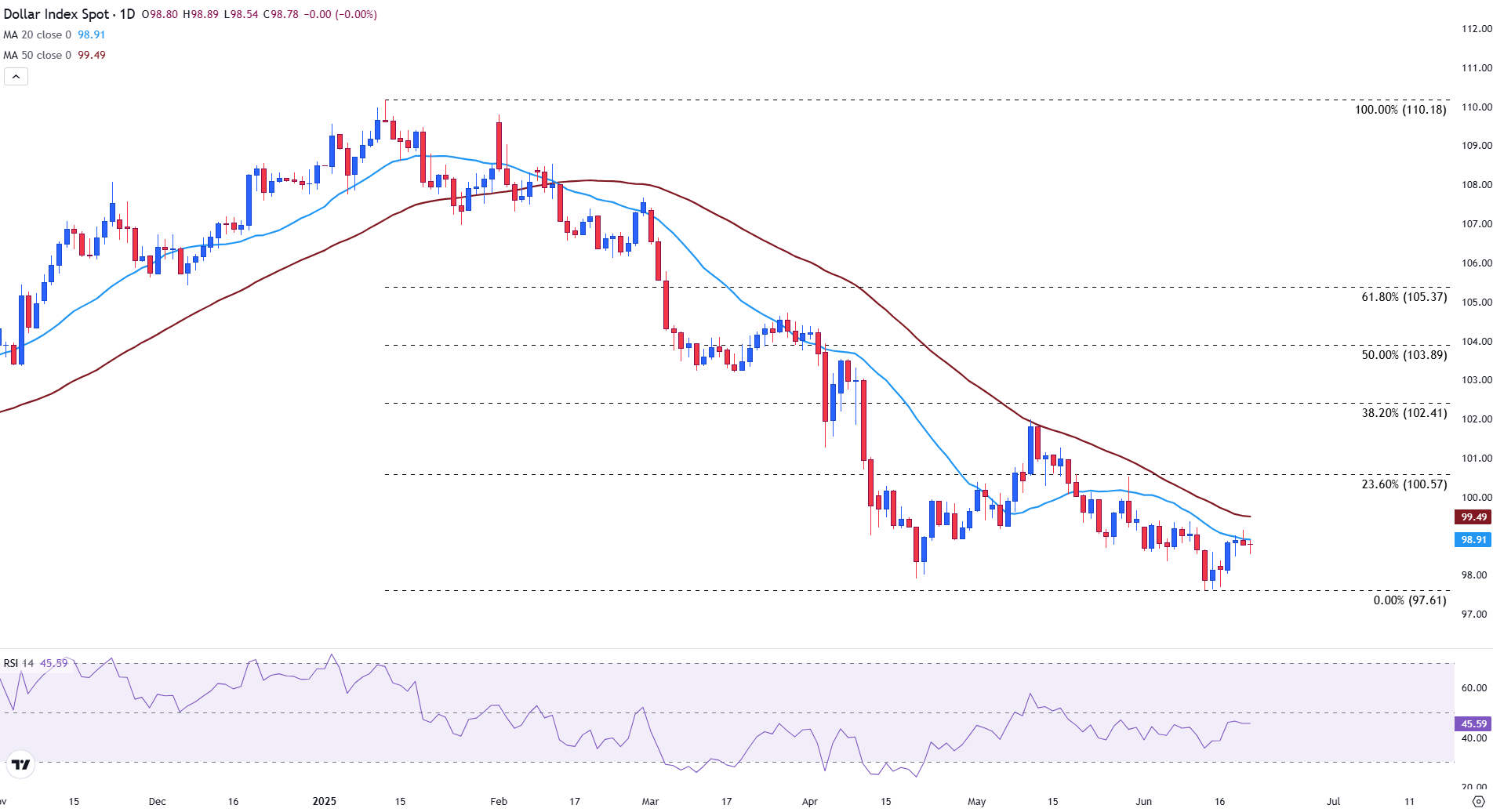
- Surge in Safe-Haven Demand Amid Middle East Tensions Supports US Dollar Index Near Key Levels.
- US Dollar Stabilizes as Federal Reserve Maintains Rates; Potential September Rate Cut Caps Gains.
- US Dollar Gains Temporary Support as Decision on Iran Looms, Markets Watch Closely.
The US Dollar Index (DXY) is experiencing sideways trading on Friday, maintaining its position above the 98.00 mark as it reacts to recent geopolitical events and monetary policy updates.
Increased geopolitical tensions in the Middle East have moderated risk appetite, yet the US Dollar’s advances are restrained due to anticipated Federal Reserve rate cuts later in the year.
Market participants are closely monitoring developments after President Trump announced a two-week timeframe to decide on potential US military involvement with Israel against Iran.
This decision period allows for ongoing negotiations in Geneva, heightening tensions if diplomatic efforts do not succeed. This scenario has provided the US Dollar with slight support as a preferred safe-haven asset.
However, the broader outlook for the US Dollar is still uncertain. The Federal Reserve’s decision to keep interest rates steady was accompanied by a cautious statement from Chair Jerome Powell, who highlighted the need for data-driven decisions and acknowledged potential inflation risks from tariffs. The market is still anticipating a possible rate cut by September.
Global monetary policy differences are adding to the complexity, with unexpected rate cuts by the Swiss National Bank and Norges Bank, whereas the European Central Bank, Bank of England, and Reserve Bank of Australia maintain a more cautious stance but are leaning towards dovishness. This has temporarily bolstered the US Dollar due to yield differentials, although market sentiment remains tentative.
From a technical perspective, the DXY is facing challenges in gaining momentum. It is currently hovering around its 20-day Simple Moving Average (SMA) at 98.91, with further resistance seen near the 50-day SMA at 99.50. Important support is found near 97.61, the low from January to June.

For upward movement, the index needs to overcome significant levels including the psychological barrier of 100.00 and the 23.6% Fibonacci retracement at 100.57. The Relative Strength Index (RSI) is at 46, indicating a lack of strong bullish momentum.
Unless there is a decisive break above the 99.50–100.57 range, the US Dollar Index may continue its broader downtrend, balancing between safe-haven inflows and the potential for Federal Reserve easing alongside changing global risk dynamics.











Leave a Comment